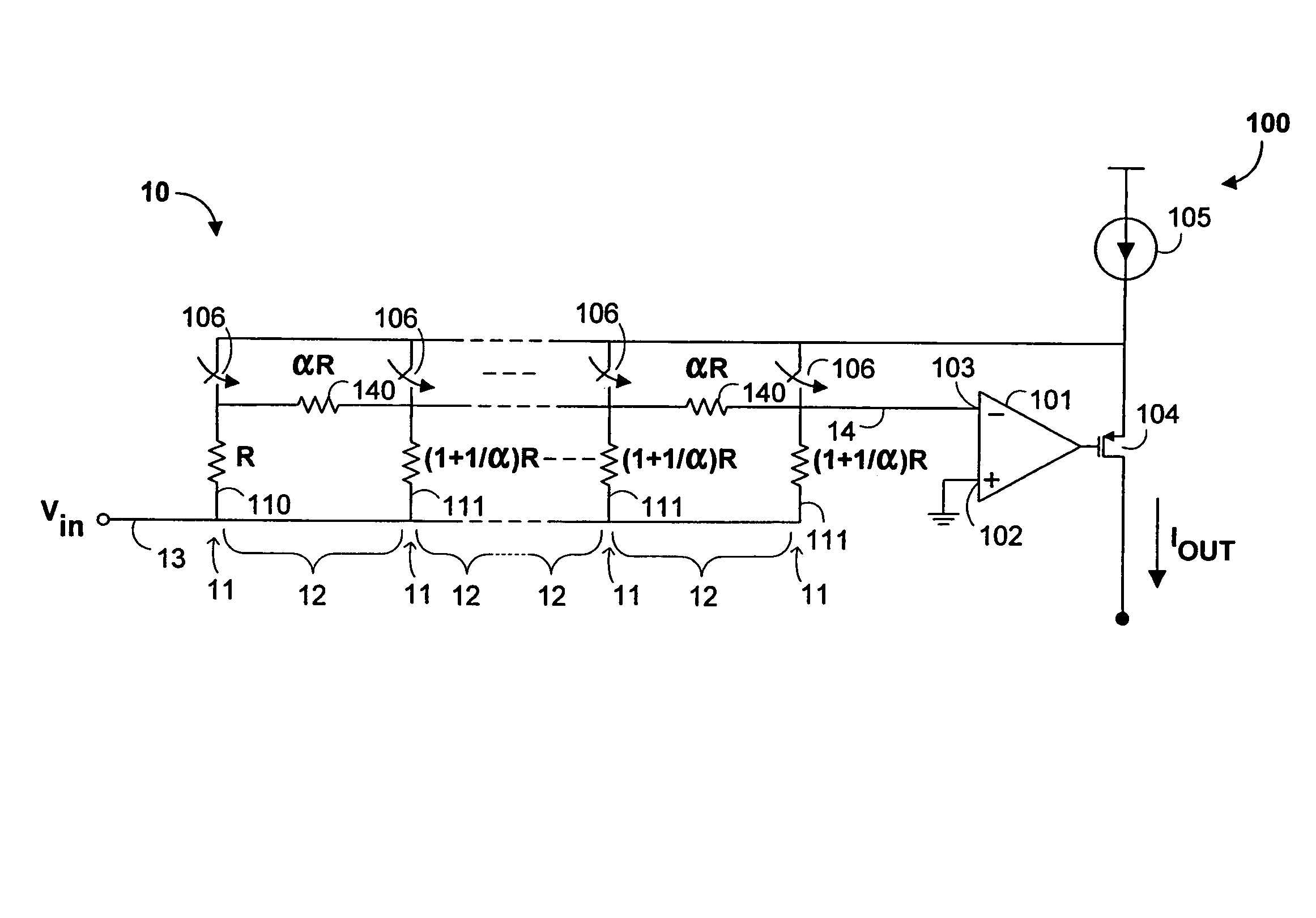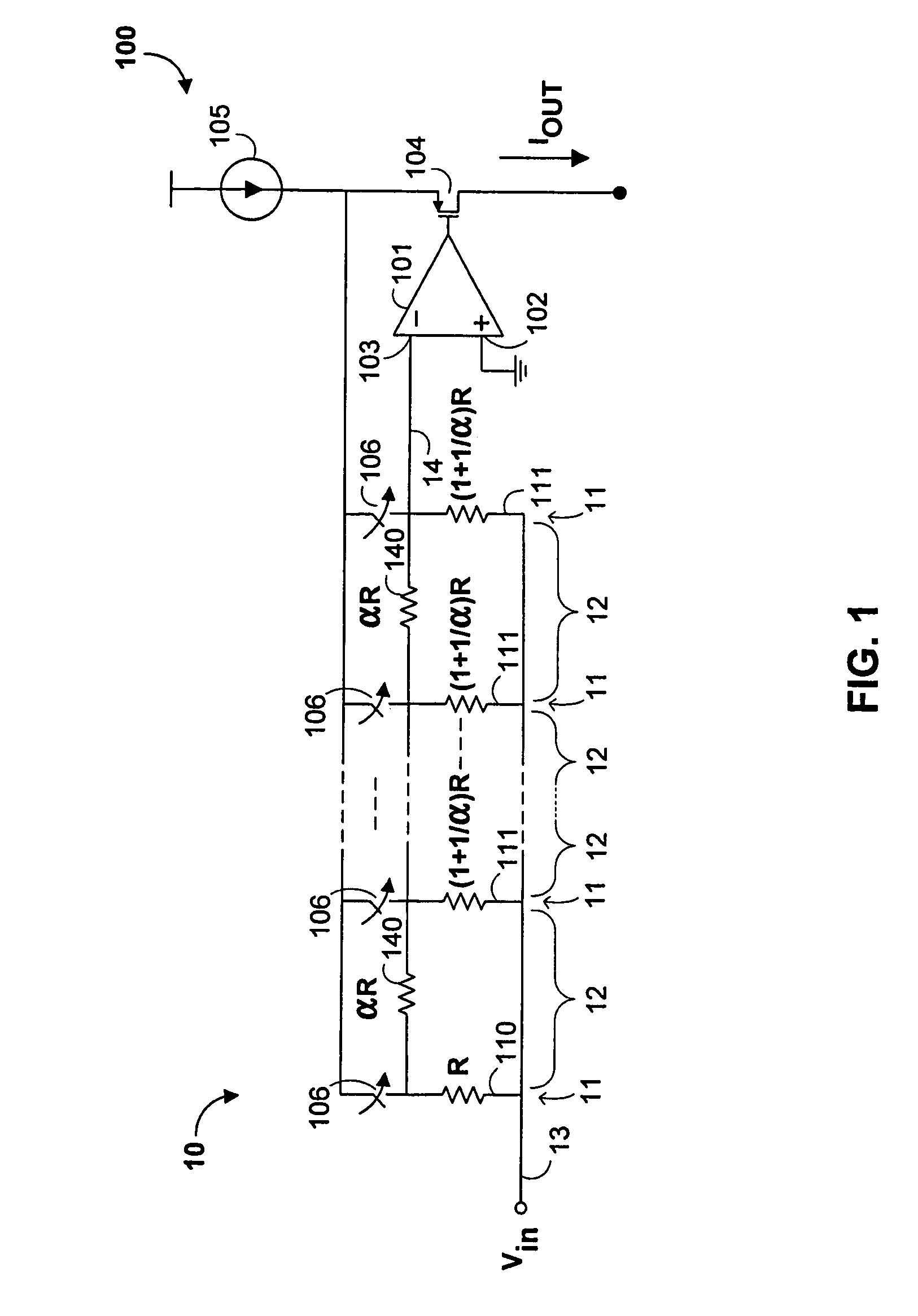Linear-in-dB variable gain amplifier using geometric ladder circuit
a ladder circuit and linear amplifier technology, applied in amplifiers, amplifiers with semiconductor devices/discharge tubes, amplifier control details, etc., can solve the problems of requiring significant overhead in unused steps, no regular, rational relationship among the values of resistors in the ladder,
- Summary
- Abstract
- Description
- Claims
- Application Information
AI Technical Summary
Benefits of technology
Problems solved by technology
Method used
Image
Examples
Embodiment Construction
[0027]The invention will now be described with reference to FIGS. 1 and 2. When in the description below of FIGS. 1 and 2, a component is described by the term “resistor,” it should be appreciated that any impedance (with real or complex value, including capacitors or inductors) or other component useful as a resistance can be encompassed by the term “resistor.” For example, in an integrated circuit, transistors may be used as a resistors. In addition, a single resistor may be constructed from a plurality of resistors.
[0028]Thus, a resistance of, e.g., 4Ω can be constructed from a single 4Ω resistor, or from two 2Ω resistors, or from a 3Ω resistor and a 1Ω resistor. Moreover, while the invention may be implemented as a differential amplifier, for ease of illustration it is described below in single-ended form. However, the principles of the invention are the same for the single-ended and differential cases.
[0029]FIG. 1 shows a first preferred embodiment of a variable gain amplifier ...
PUM
 Login to View More
Login to View More Abstract
Description
Claims
Application Information
 Login to View More
Login to View More - R&D
- Intellectual Property
- Life Sciences
- Materials
- Tech Scout
- Unparalleled Data Quality
- Higher Quality Content
- 60% Fewer Hallucinations
Browse by: Latest US Patents, China's latest patents, Technical Efficacy Thesaurus, Application Domain, Technology Topic, Popular Technical Reports.
© 2025 PatSnap. All rights reserved.Legal|Privacy policy|Modern Slavery Act Transparency Statement|Sitemap|About US| Contact US: help@patsnap.com



